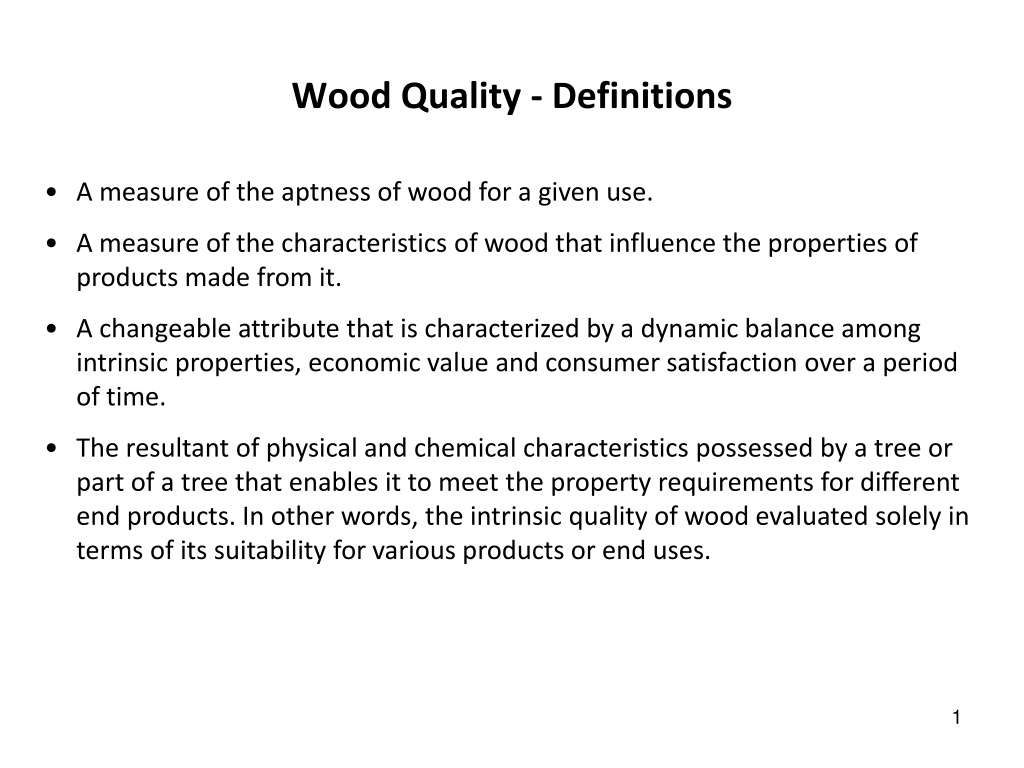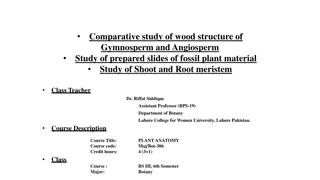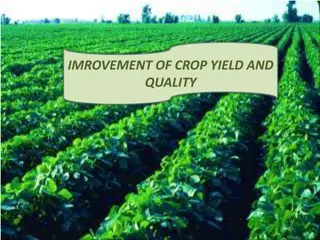Understanding Wood Quality: Definitions and Influencing Factors
Wood quality refers to the characteristics of wood that determine its suitability for various uses, influenced by factors such as tree growth, forestry management options, and technical performance. Foresters focus on tree growth characteristics like density, strength, and grain direction to cultivate quality wood properties. Key considerations include stem form, branching, ring structure, and fiber characteristics. Factors like density, grain uniformity, knots, and juvenile wood impact the overall quality of wood for different applications.
Download Presentation

Please find below an Image/Link to download the presentation.
The content on the website is provided AS IS for your information and personal use only. It may not be sold, licensed, or shared on other websites without obtaining consent from the author. Download presentation by click this link. If you encounter any issues during the download, it is possible that the publisher has removed the file from their server.
E N D
Presentation Transcript
Wood Quality - Definitions A measure of the aptness of wood for a given use. A measure of the characteristics of wood that influence the properties of products made from it. A changeable attribute that is characterized by a dynamic balance among intrinsic properties, economic value and consumer satisfaction over a period of time. The resultant of physical and chemical characteristics possessed by a tree or part of a tree that enables it to meet the property requirements for different end products. In other words, the intrinsic quality of wood evaluated solely in terms of its suitability for various products or end uses. 1
influences determines determines influences Forestry Management Options Tree Growth Wood Properties Technical Performance Acceptance For End Use influences influences Size Cost of management and silviculture influences influences Price
Foresters Options * Tree Growth Characteristics Wood Properties Technical Performance Cultivate a) Stem form 1. Density Strength Irrigate Fertilize (i) size (ii) straightness 2. Texture Drying behaviour Improve stock (iii) taper 3. Grain direction Stability in service Planting distance Juvenile space b) Branching 4. Knot size and number Sawing and machining Thin c) Ring structure 5. Fiber characteristics Mechanical fastening Prune Choose rotation age d) Spiral grain (i) juvenile wood (ii) reaction wood Uniformity Decay resistance Treatability
* Wood properties Technical performance 1. Density Strength 2. Texture Drying behaviour 3. Grain direction Stability in service 4. Knot size and number Machining 5. Fiber characteristics Mechanical fastening (i) juvenile wood Uniformity (ii) reaction wood Decay resistance Treatability 4
* Growth characteristics Wood properties (a) Stem form 1. Density (i) size 2. Texture (ii) straightness 3. Grain direction (iii) form 4. Knot size and number (b) Branching 5. Fiber characteristics (c) Ring structure (i) juvenile wood (d) Spiral grain (ii) reaction wood 5
wood density grain uniformity of growth rings straightness Wood Quality % knots heartwood reaction wood fibre length juvenile wood 6

























